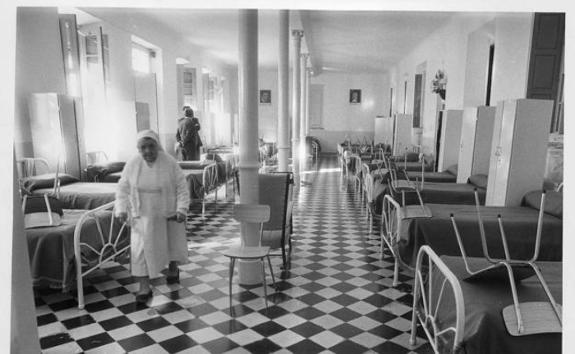

Sections
Highlight

Daryl Finch
Friday, 19 June 2020, 17:34
Compartir
The morning after 15 July 1898, news of María del Carmen Enriqueta filled the newspapers; when she died on this day in 1980, it was barely mentioned. She has almost been erased from the collective memory now, but 'La Niña de la Ciencia' (the science girl) wrote her name into the history books when she became the first baby in Andalucía to be born alive after her mother died, and only the fourth in Europe.
Gynaecologist Dr José Gálvez Ginachero, medical specialist to Maria Christina of Austria, the mother of King Alfonso XIII, who was queen regent at the time, gained global fame for performing the procedure. His path crossed with that of the girl's mother just two days earlier when she was admitted to the San Juan de Dios Provincial Civil Hospital, while heavily pregnant and with a complicated medical history.
María González Enríquez was 28 years old and known on the streets of Malaga because she lived from begging, accompanied by her husband, a very popular blind man called Antonio Sánchez. María had a prominent hump on her back, although her most severe ailments were associated with her breathing and the violent crises she used to suffer.
Once María went into labour, Dr Gálvez did what he could to stabilise her condition, but in the early hours of 15 July, because she had reached a critical state, he decided to induce the birth. Minutes after she had her last breath, the baby was born by caesarean section, weighing 1.2kg.
She may have survived, but María del Carmen faced further difficulties: her mother had died, her father also died when she was very young and her only sister had no means of caring for her. This meant that she grew up at the San Manuel asylum, where she was admitted in 1901 when she had hardly begun to walk. Those who knew her said that, like her mother, she was hump-backed and had difficulty speaking but also developed senility at an early age.
Dr Gálvez helped her financially all through her childhood and adolescence but 'La Niña de la Ciencia' was unable to work and she remained in the asylum. She was also forgotten by the city, which was fascinated by her story during the first months of her life but very quickly lost interest in what became of her.
Seventy years after entering the asylum for the first time, 'La Niña de la Ciencia' was moved first to the Hermanitas de los Pobres and then to the Nuestra Señora de los Ángeles asylum, where she died on 19 June 1980, at the age of 82.
Publicidad
Publicidad
Publicidad
Publicidad
Reporta un error en esta noticia
Necesitas ser suscriptor para poder votar.